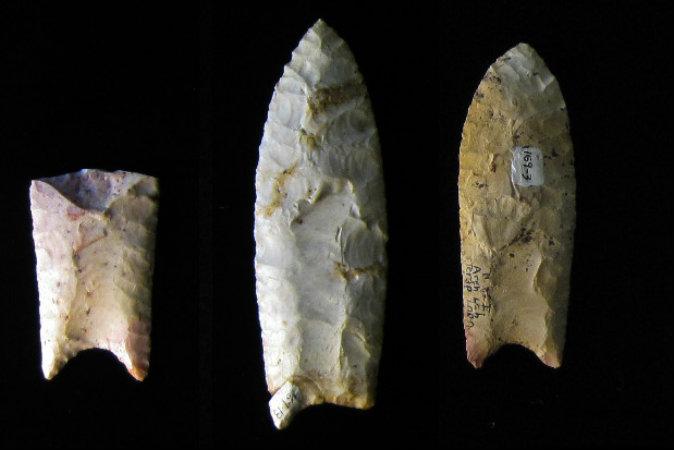Archaeologists have found numerous artifacts on a remote forest riverbank in northern Idaho dating back around 13,500 years, adding to the evidence for an ancient human presence in the Northwest, according to an announcement on Westerndigs.org. The discovery further ignites the debate about who the first inhabitants were in the Americas and from where they arrived.
The finding was made in test pits along the Clearwater River in Idaho and included a blade-like tool made from a rock cobble, and dozens of flakes left over from the tool-making process. A few layers above, researchers found nearly 20 detailed and distinctive stone points, fashioned in what is known as the Western Stemmed Tradition. The artifacts were dated based on charcoal that was compacted within the same layer of soil, the oldest of which were found to be between 13,490 and 13,740 years old.
The Western Stemmed Tradition (WST) is the name given to the material culture left by early Archaic/late Paleoindian hunter-gatherer-foragers who lived in the American western desert in what are now the American states of Oregon, Idaho, Utah, Nevada and Colorado. The first discovery of the WST was significant because for decades it was believed that the earliest inhabitants in the Americas were the Clovis people, who had distinctive tools identified by carved points with long, concave grooves, known as a flute, where a spear locked in place. But the WST points are narrower, lack flutes, and require a different chipping method, and discoveries of such tools have been found that pre-date the Clovis tools. This suggests that humans arrived in the Americas before the Clovis people, a culture generally thought to have arisen around 13,000 years ago. Many have suggested that there could even have been early migrating groups that were much more archaic and which didn’t leave behind living descendants.
“As research progresses on the Western Stemmed Tradition … it is looking like the people who produced this type of tool were here in the Pacific Northwest before Clovis peoples, but during the same period when Clovis peoples were moving through other regions of North America,” said Laura Longstaff of the University of Idaho, who reported her team’s findings at the annual meeting of the Montana Archaeological Society.
Incredibly, one of the flake tools discovered at the site still contained traces of proteins associated with rabbit flash, revealing key insights into what the ancient people hunted and ate. The chemistry of the points also revealed clues about the travels and trade that the ancient hunter-gatherers engaged in. For example, more than a quarter of the artifacts came from a quarry about 50 kilometres to the south. But nearly as many were fashioned out of rock from a deposit across the Bitterroot Mountains in what’s now Montana, and some samples hailed from as far away as central Oregon.
“There is enough material associated with the earliest dates to get an idea of the animals they hunted, tools they were making, stone they used at 13,000 years ago,” said Ms Longstaff. “The special thing is that the volume of artifacts indicates that many different people were stopping there at different times of the year and maybe even just a few days apart.”
Taken together, the range of artifacts found at the Idaho site, known as Kelly Forks, suggests long and regular use by ancient hunter-gatherers, primarily for making tools and processing game. The site reflects a depth of human activity that’s rare in the Northwest’s archaeological record.
Republished with permission from Ancient Origins. Read the original.




